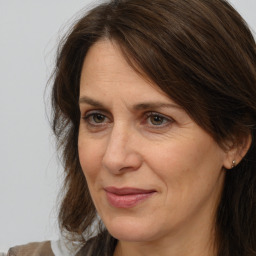Introduction To Finance
Finance is an important field in accounting which deals in allocating of financial resources to business. It takes into consideration time value of money and risk factor while making decisions related to finance. In hospitality industry finance plays a key role in managing the monetary resources of the business (Avlonitis and Indounas, 2005). This industry requires finance management in order to set new business, grow and expand the existing one. The present study analyse the sources of finance available to service and business industries. Further the report also focuses on elements such as gross profit percentages, cost, and selling price for product and services. Last but not the least the study examines methods of controlling stock band cash in business and service environment.
View Samples on coursework, essay, and dissertation
Free Samples
Reviewing the sources of funds available to business and services industries
There are various sources of finance available to business and service industries. These sources can be internal and external. Different types of sources are described below:
Internal
Internal sources of finance are raised from inside the business.
Sale of assets: In order to increase the funds the business can sale of the assets which are obsolete or not in use. The benefit to this is that the firm can use its capital in better way. However, new business might not have old assets.
Retained profit: It is the part of profit which is kept aside by the business in order to make its future use (Drake and Fabozzi, 2012). Obtaining finance through this does not require firm to pay interest on holdings. However, this source is not available in case of new business.
External
This source of finance is available outside the business.
Hire purchase: It includes purchasing of asset by paying down payment and making the rest of payment in instalment. This is beneficiary as the full payment is to require to be paid at the time of purchasing (Bennouna and et.al., 2010). However, the ownership of goods is transferred after payment of last instalment.
Long term bank loan: Business can take borrowing from bank for a certain period of time. The business has to pay interest on these borrowings.
Leasing: It refers using the asset for period of time rather than purchasing it. For this business has to pay rent. The total cost of leasing might be more than purchasing so this can be disadvantage to the firm.
Sources for the capital expenditure (purchasing of machinery) for small business
- Loan from bank
- Hire purchase
- Leasing
From the three available sources, business can borrow money from bank. According to the case as the business is owned by sole proprietor (Bhandari and Iyer, 2013). Thus the firm can take loan from bank in order to purchase new machinery. This loan is given for fixed period of time so business can repay such loan along with interest. You can try Psychology Assignment Help
Contribution of various methods of generating income for large chain restaurant
There are various methods through which the large chain restaurants can generate income. These techniques are discussed as such:
Opening new outlets of restaurant: Income can be generated by the means of opening new outlets of the restaurants at different locations. It is helpful as the business can increase its profitability through this (Orens and et. al., 2009). However, this method involves huge investment. Moreover, managing large chain can be difficult for the firm.
Sale of unused asset: In order to generate income restaurant can sale off the assets which are obsolete or not in use. The money received from selling the asset can be used in financing new investment proposals (Okello-Obura and Kigongon-Bukenya, 2008). But selling asset may not generate higher income rather than using it for some productive purposes.
New product development: By developing a new product or service the restaurant can generate income. This will help the business in increasing its sales and better segmenting and targeting of new product can be done. But there is no guarantee that new product is accepted by customers.
Discussion on the elements of cost, gross profit percentages and selling prices for products and services
The elements of cost are classified in two. These are direct cost and indirect cost.
- Direct cost: It is also known as prime cost which incurred by Marks and Spencer due to direct material, direct labour and direct expenses (Ismail and et.al., 2005). This cost be controlled when the business make optimum use of material and labour during production process. Carrier bag provided to customers is direct cost incurred by Marks and Spencer. Other cost such as food waste and staffing cost is also included in it.
- Indirect cost: It is the type of cost which is not related to production. This cost comprises of administration, personnel, and security costs (McKeown, 2012). Marks and Spencer incur indirect cost due to stationery, telephone expenses, security and electricity. The firm can control such cost by saving electricity. Long with this the firm can limit the amount of stationer ordered so that this cost can be reduces.
- Variable cost: These cost Are those which varies as and when sales volume is increased or decreased.
- Fixed cost: It remains fixed no matter how many units of goods are produced. For example: rent, insurance premium, salary to employees.
- Labour cost: It is the cost of labour including wages and salaries paid to them. It is the cost of benefit which is provided by employer to employee.
- Expenses cost: It is the cost of advertisement, sales and distribution as well overhead cost. In addition to this marketing charge is also expense cost to company which occurs when business sells the goods and services. you can take Economics Assignment Help
- Material cost: It is the cost of raw material or other input while are used in the production of product.
Relation between cost, gross profit percentage and selling price can be demonstrated like this:
Cost +Cost*profit% = selling price
Gross profit margin is not the exact estimate of pricing strategy of the company but it depicts financial health of the organisation.
Evaluation of methods of controlling stock and cash in a business and service environment
Stock can be defined as the goods which are kept by business in order to sale and distribute.
Methods of controlling stock
Economic order quantity: It is a standard way through which Mark and Spencer can attain balance between too much holdings or too little holdings.
Reorder point: It defines the level of stock when an order is to be made. This is done in order to bring inventory upto economic order quantity (Robson, 2008).
Just in time: It is method of stock control under which cost is cut by reducing the stock amount to minimum.
Anticipatory: These are the type of stock which is kept by Mark and Spencer in order to meet high demand for product. This is generally in those kinds of products which are seasonal.
Response based: This method emphasize on reducing the time between ordering and receiving the quantity. This method assists Mark and Spencer in increasing the customer base by keeping right and appropriate goods in stock.
Importance of cash and ways to control
Cash is important of Mark and Spencer in order to make good planning for future. This planning can include investment in new business or expansion of existing one (Stent and et.al., 2010). Cash is also important for business as through this it can meet it future obligations.
Money can be controlled by effective internal audit. If Mark and Spencer have separate department for cash management then there will be less chance to commit scam in cash (Operating Margin Ratio, 2013). Also the business must ensure that not much amount of cash is blocked in payment of debt. You can free examples here
Bank reconciliation
It is the statement which is used in order to ensure that both the balances of bank are correct (Tracy, 2012). That is bank balance as per general ledger matches with balance as per bank.
Process for bank reconciliation
- Adjustment in the balances as per bank's pass book
- Adjustment in balances as per the cash book
- Comparison of the adjusted balances
- Making journal entries
Process and purpose of budgetary control and outlining the budgetary control cycle
Budgetary control is technique of measuring the actual result with that of budgets.
Purpose of budgetary control can be described as follows:
- It helps in creating budget for each section in business.
- Comparison of actual performance with that of budget helps in evaluating the deviation between both and in setting the accountability of executives in case of failure in performance as per budget (Schulze, 2007).
- Helps in revising the budget in light of changes required.
- It also helps in taking corrective action when actual performance does not match the budgeted performance.
- It helps in making optimum utilisation of available resources.
Process of budgetary control
There are series of steps involved in budgetary control system. This control is carried out in form of cycle which is referred to as budgetary control cycle. The process of budgetary control is as follows:
- Estimating for current budget period: The first step involves forecasting of the budget for the current period (Shahwan, 2008). This can be done by keeping the records of pervious budget into consideration.
- Preparation of budget for next budget period: The next step involves preparation of the budget. Actual budget is prepared after forecasting the previous year sales and expenses. Resources are allocated to different activities.
- Comparison of actual performance with that of budget: The actual performance for the year is then compared to budget and deviation between both these are analysed. This is also known as variance analysis (Bahr and Lennerts, 2010).
- Taking corrective actions: After analysing the variances remedial measures are taken so that in future actual performance may match the budget.
Fixed, variable and semi variable cost
Fixed cost is the cost which does not change with the change in number of units to be produced. These cost will be incurred by the business even though it decreases it units of productions. For example: salary paid to employees. Variable cost are those which keeps on changing as there is change made in units to be produced (Yuen, 2007). For example: cost of direct labour, direct material. Semi variable coast is the combination of both fixed and variable. These are remain fixed to certain extend of production and as after that it changes with the change in units of production.
Break even analysis
Breakeven point where revenue obtained is equal to the cost involved in obtaining those revenues. It is the situation where company makes no profits and losses. Desired profit is the profit which the company expects from each project (Boyad, 2014). As per the calculation of break even analysis the profit for project 4 is highest so this investing in this project will be profitable for the firm in long run. It is analysed that project 1 and project 2 are loss making. Yuri if invests in such project then it can bear loss. Project 3 shows zero as profit and loss that means it is neither making profit and nor making losses. Project 4 would be more appropriate for Yuri organisation as it is giving a profit of £5000.
Conclusion
It can be concluded from the present study that finance plays important role in hospitality industry. There are various sources from which the company can finance its business activities. These sources can be retained earnings, sale of fixed asset, long term loan hire purchase. There are various sources through which the business can generate income. These sources are such new product development, opening new outlets and sale of unused asset (Financial information and decision making, 2014). Further the report also analysed that budgetary control is very important in analysing the variance for Marks and Spencer. Through the variance analysis position of the organisation can be seen. Ratio from adjusted balance sheet reflects that liquidity, profitability and efficiency position of R. Riggs organization is strong. Variable cost, fixed cost and semi variable cost are significant in determining the breakeven point. As per the breakeven point project 4 is found to be best for Yuri organisation.
References
- Bennouna, K., and et.al., 2010. Improved capital budgeting decision making: evidence from Canada. Management Decision.
- Bhandari, S. and Iyer, R., 2013. Predicting business failure using cash flow statement based measures. Managerial Finance.
- Drake, P. and Fabozzi, F., 2012. Analysis of Financial Statements. 3rd ed. John Wiley & Sons.
- Eccles, T. and Holt, A., 2005. Financial statements and corporate accounts: the conceptual framework. Property Management.
- Ismail, W. A. W. and et.al., 2005. Corporate Failure Prediction: An Investigation of PN4 Companies. Journal of Financial Reporting and Accounting.






















